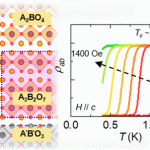XiA. Albert, R. Alfaro, C. Alvarez, J. R. Angeles Camacho, J. C. Arteaga-Velazquez, K. P. Arunbabu, D. Avila Rojas, H. A. Ayala Solares, V. Baghmanyan, E. Belmont-Moreno, S. Y. BenZvi, C. Brisbois, K. S. Caballero-Mora, T. Capistran, A. Carraminana, S. Casanova, U. Cotti, J. Cotzomi, E. De la Fuente, C. de Leon, R. Diaz Hernandez, J. C. Diaz-Velez, B. L. Dingus, M. Durocher, M. A. DuVernois, R. W. Ellsworth, C. Espinoza, K. L. Fan, K. Fang, N. Fraija, A. Galvan-Gamez, J. A. Garcia-Gonzalez, F. Garfias, M. M. Gonzalez, J. A. Goodman, J. P. Harding, S. Hernandez, B. Hona, D. Huang, F. Hueyotl-Zahuantitla, P. Huntemeyer, A. Iriarte, A. Jardin-Blicq, V. Joshi, D. Kieda, A. Lara, J. Lee, W. H. Lee, H. Leon Vargas, J. T. Linnemann, A. L. Longinotti, G. Luis-Raya, J. Lundeen, K. Malone, O. Martinez, J. Martinez-Castro, J. A. Matthews, P. Miranda-Romagnoli, J. A. Morales-Soto, E. Moreno, M. Mostafa, A. Nayerhoda, L. Nellen, M. Newbold, M. U. Nisa, R. Noriega-Papaqui, L. Olivera-Nieto, N. Omodei, A. Peisker, Y. Perez Araujo, C. D. Rho, Y. J. Roh, D. Rosa-Gonzalez, F. Salesa Greus, A. Sandoval, M. Schneider, J. Serna-Franco, A. J. Smith, R. W. Springer, K. Tollefson, I. Torres, R. Torres-Escobedo, R. Turner, F. Urena-Mena, L. Villasenor, I. J. Watson, T. Weisgarber, E. Willox, H. Zhou
The Astrophysical Journal Letters 912.1 (2021): L4.
Abstract
Microquasars with high-mass companion stars are promising very high energy (VHE; 0.1–100 TeV) gamma-ray emitters, but their behaviors above 10 TeV are poorly known. Using the High Altitude Water Cerenkov (HAWC) observatory, we search for excess gamma-ray emission coincident with the positions of known high-mass microquasars (HMMQs). No significant emission is observed for LS 5039, Cyg X-1, Cyg X-3, and SS 433 with 1523 days of HAWC data. We set the most stringent limit above 10 TeV obtained to date on each individual source. Under the assumption that HMMQs produce gamma rays via a common mechanism, we have performed source-stacking searches, considering two different scenarios: (I) gamma-ray luminosity is a fraction òγ of the microquasar jet luminosity, and (II) VHE gamma rays are produced by relativistic electrons upscattering the radiation field of the companion star in a magnetic field B. We obtain òγ < 5.4 × 10−6 for scenario I, which tightly constrains models that suggest observable high-energy neutrino emission by HMMQs. In the case of scenario II, the nondetection of VHE gamma rays yields a strong magnetic field, which challenges synchrotron radiation as the dominant mechanism of the microquasar emission between 10 keV and 10 MeV.



